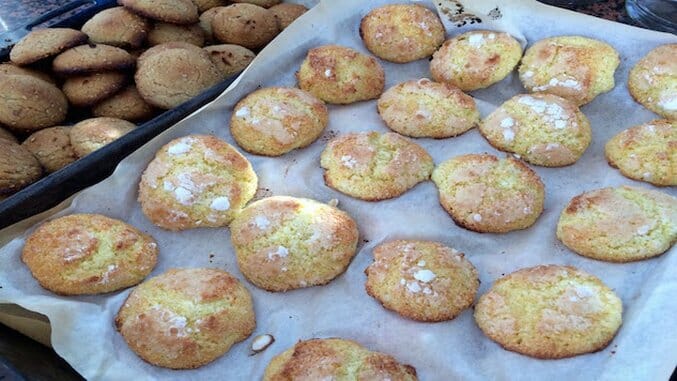What’s That Smell? Morocco’s Communal Ovens
Photos by Johanna Read
Tourists who spend more than a day or two exploring any Moroccan medina soon notice baking being carried through the streets. It might be the flat, circular loaves of bread they’ve surely eaten at breakfast. It might be the coconut cookies, resembling macaroons, that many riads use to welcome guests to Morocco, accompanied by glasses of hot, sugary mint tea. Even if they haven’t seen the trays, visitors notice the sweet scent of fresh baking.
Most tourists assume that a bakery is doing a booming business supplying nearby restaurants and hotels. Until the observant among them notices that trays of raw dough are also carried through the twisting medina streets.

Medinas are the oldest sections of North African cities. Surrounded by high walls, many medinas are purposely labyrinthine, designed to slow down ancient invaders who breached the walls. The twisting streets and alleys are narrow, seldom wide enough for cars. The 1200-year-old Fez medina is supposedly the world’s largest car-free urban area.
Medinas have been lived in for centuries, and many practices have changed little. Donkeys
carry goods (and tourists’ suitcases) through the passageways. Men and women wear hooded djellabas (though most certainly with a cellphone in their pocket). Many houses don’t have running water, so residents draw cooking water from fountains and visit the hammam to bathe.
Few homes or even buildings that have been renovated into riad or dar hotels have ovens. Even if they do, they’re rarely used. Instead, home cooks and restaurant pastry chefs send their baking to the communal oven, the faraan.

With sticks of olive wood piled outside, family-owned faraans have deep brick-lined ovens within. The expert baker puts his neighbors’ dough onto a long wooden paddle and then slides it into the oven. He knows which part of the oven is best for sesame cookies and which is best for round khubz bread. He keeps track of which baking belongs to which household, even without the identifying marks some cooks put on their dough.
People prefer to use the faraan, even if their house has an oven. Bringing baking to the
communal oven means not heating up their kitchens in the hot Moroccan summer. It means
saving fuel, whether it be propane or wood. And it saves time.
Finding time to walk baking down the street and remembering to pick it up might seem more
difficult than baking at home. Not in community-minded Morocco.
“If you’re busy, you just leave your baking outside your house,” Mustapha, a young man from Fez, tells me. “When one of your neighbours goes by, they’ll see it, bring it to the communal oven and pay the baker for you.”

